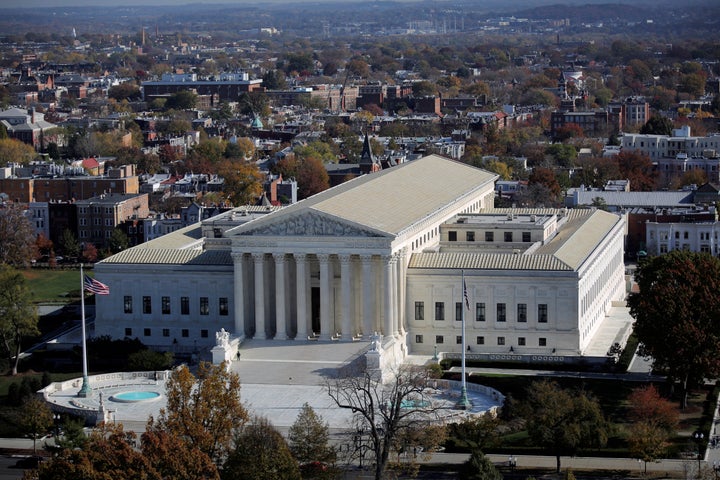
Votes are still being counted, but the New York Times predicts that Hillary Clinton’s popular vote margin is now greater than 1.5 million and is projected to exceed 2 million when all is said and done. This result means that Democratic candidates have won the popular vote in six of the last seven presidential elections, dating to Bill Clinton’s first victory in 1992.
Defying all historical norms, this electoral success has not produced a Democratic majority on the Supreme Court. Indeed, Democratic appointees have not held a majority on the Court since 1970, and Donald Trump’s election makes it likely that this half-century of Republican control will continue on the Court for years to come.
Because Republican senators refused to consider President Obama’s nomination of Merrick Garland to replace the late Justice Antonin Scalia, President-elect Trump has one vacancy to fill immediately. Justices Ruth Bader Ginsburg, Stephen Breyer, and Anthony Kennedy are all aged 78 or older, and Clarence Thomas, though only 68, has served for 25 years and might be tempted to retire while President Trump can name his successor. If Trump successfully replaces Scalia and any two of these other four justices, his three appointees will join with Chief Justice John Roberts and Justice Samuel Alito to form a Republican majority that will last at least until one of these justices retires. Roberts and Alito, each appointed by President George W. Bush, are 61 and 66 years old, respectively, so that moment may not come until 2030 or so. In other words, no matter how Democrats do in the next three presidential elections, control of the Supreme Court may remain out of reach.
The current Court’s democratic legitimacy is even more dubious because the conservative judicial majority has itself repeatedly acted to entrench its hold on power. In 2000, a five-justice conservative majority ordered Florida election officials to cease an ongoing recount of votes, thus handing the election to George W. Bush. In 2010, a five-justice conservative majority held that the government could not constitutionally limit corporate spending on elections, thus opening the floodgates to millions of dollars in unregulated and sometimes undisclosed campaign spending, most of it in support of Republican candidates. In 2013, a five-justice conservative majority struck down a key provision of the 1965 Voting Rights Act, thus enabling widespread efforts by Republican state legislatures to suppress minority voting rights.
This is not the first time in its history that the Court has served as an agent of power and privilege, but it is surely one of the most egregious stretches. If Chief Justice Roberts cares about the Court’s role—potential role—as a guardian of long-term constitutional values, he will have to find a way to build a governing coalition among the justices that cuts across partisan lines.
The next four years may provide Chief Justice Roberts with plenty of opportunities to do so. As Corey Brettschneider observed in Politico in August, candidate Trump displayed an extraordinary penchant for calling on government to do blatantly unconstitutional things—registering Muslims, closing mosques, authorizing torture, silencing criticism in the press, threatening judges, halting immigration on the basis of religion or ethnicity, and the like. If President Trump tries to enact these policies, it will be up to Republican judges to stop him.
Thomas M. Keck is professor of political science at Syracuse University’s Maxwell School and the author of Judicial Politics in Polarized Times.
